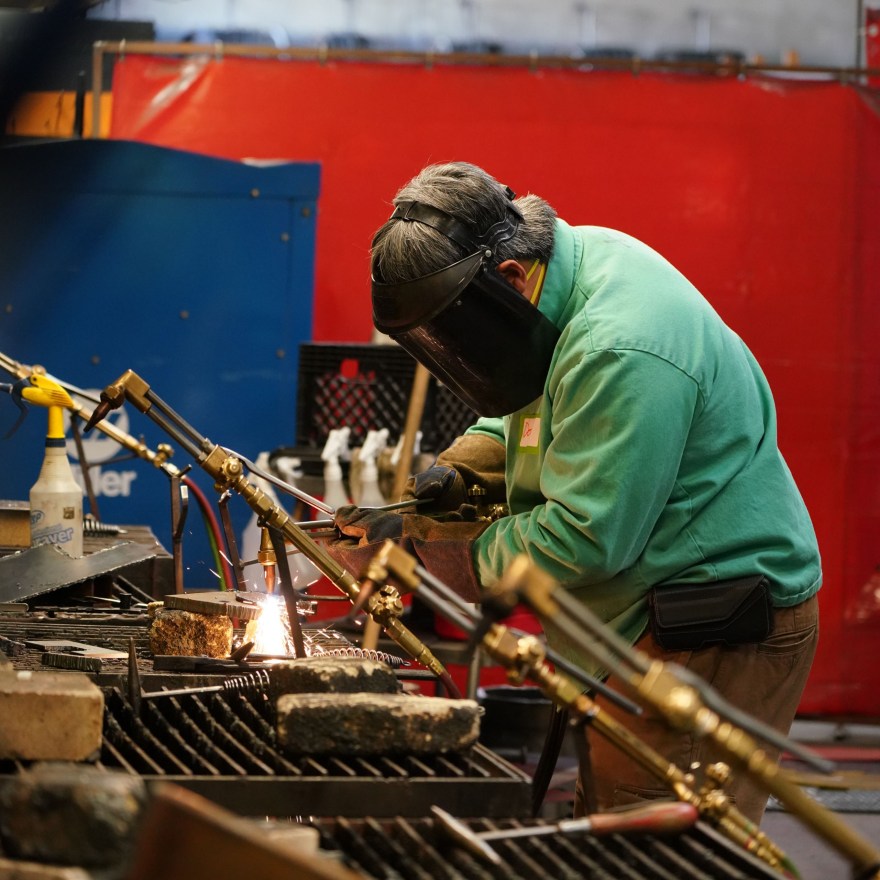Unleash The Power: Explore The Limitless Possibilities Of The Use Of Metalworking
The Use of Metalworking: Transforming Raw Materials into Masterpieces
Introduction:
2 Picture Gallery: Unleash The Power: Explore The Limitless Possibilities Of The Use Of Metalworking


Welcome to my blog, dear readers! Today, I am thrilled to share with you my passion for the fascinating art of metalworking. As a dedicated metalworker, I have had the privilege of delving into this ancient craft, exploring its rich history, and witnessing firsthand the incredible transformation of raw materials into awe-inspiring masterpieces. In this article, I will take you on a journey through the world of metalworking, shedding light on its significance, techniques, and the countless possibilities it offers.
What is Metalworking?

Image Source: thecrucible.org
Metalworking, in its simplest form, involves the manipulation of metals to create various objects, structures, and artwork. It is a specialized craft that dates back thousands of years, with evidence of metalworking techniques being practiced in ancient civilizations such as Mesopotamia, Egypt, and China. Today, it has evolved into a blend of traditional methods and modern technology, combining skillful craftsmanship with innovative machinery.
Who are the Metalworkers?
Metalworkers are skilled artisans who possess a deep understanding of the properties and behavior of different metals. They employ a wide range of tools and techniques, such as welding, forging, casting, and machining, to shape and mold metal into desired forms. From blacksmiths fashioning intricate ironwork to jewelers crafting delicate silver jewelry, metalworkers span various disciplines, each with their own unique approach and expertise.
When and Where is Metalworking Used?
Metalworking finds its applications in countless industries and sectors, making it an integral part of our daily lives. It is widely used in construction, manufacturing, automotive, aerospace, and even in art and design. From the towering skyscrapers that define modern cityscapes to the intricate components of a high-performance engine, metalworking plays a crucial role in shaping our world.
Why is Metalworking Important?

Image Source: thecrucible.org
The importance of metalworking cannot be overstated. It allows us to transform raw materials into functional and aesthetically pleasing objects that serve various purposes. Metalworkers’ creations not only enhance our daily lives but also contribute to technological advancements and artistic expression. Additionally, metalworking fosters economic growth by providing employment opportunities and driving innovation in related industries.
How Does Metalworking Work?
Metalworking involves a series of meticulous steps and processes. It begins with the selection of the appropriate metal, considering factors such as durability, strength, and aesthetic qualities. The metal is then shaped, cut, and formed using specialized tools and machinery. Techniques like welding, soldering, and brazing are employed to join separate metal components together. Finally, the finished piece undergoes various finishing processes, such as polishing, plating, or painting, to enhance its appearance and protect it from corrosion.
Transition Paragraph:
Now that we have explored the fundamentals of metalworking, let’s delve deeper into some frequently asked questions and essential aspects related to this captivating craft.
FAQs about Metalworking:
1. What are the different types of metalworking?
Metalworking encompasses multiple disciplines, including blacksmithing, welding, machining, casting, and jewelry making. Each type requires specialized skills and tools.
2. What materials are commonly used in metalworking?
Metalworkers work with a wide range of materials, such as steel, iron, aluminum, copper, brass, and precious metals like gold and silver.
3. Are there any size limitations in metalworking?
Metalworking caters to both small-scale and large-scale projects. From intricate jewelry pieces to massive architectural structures, the possibilities are endless.
4. What are the requirements to become a metalworker?
Becoming a skilled metalworker often involves formal education or apprenticeships to acquire the necessary technical knowledge and hands-on experience. Attention to detail, creativity, and a passion for the craft are also essential qualities.
Illustration/Example Paragraph:
To illustrate the versatility of metalworking, let’s consider the example of custom architectural metalwork. In the realm of architectural design, metalworking offers endless possibilities to create stunning structures that seamlessly blend form and function. From magnificent gates and railings to intricate decorative details, metalworkers can bring an architect’s vision to life. The use of metalworking allows for the construction of durable structures that withstand the test of time while adding a touch of elegance to any environment.
Comparison/Contrast Paragraph:
While metalworking presents numerous advantages, it is essential to consider both its benefits and disadvantages:
Benefits of Metalworking:
– Durability: Metalwork creations are known for their longevity, ensuring that they can withstand the test of time.
– Versatility: Metalworking allows for the creation of objects ranging from small intricate jewelry to massive architectural structures.
– Aesthetic Appeal: Metalwork pieces often boast a unique and captivating visual appeal, adding elegance and sophistication to any space.
Disadvantages of Metalworking:
– Cost: Depending on the complexity and materials used, metalworking can be an expensive endeavor.
– Skill Requirement: Achieving mastery in metalworking requires time, practice, and a deep understanding of the craft.
– Environmental Impact: Certain metalworking processes may have environmental consequences, such as the generation of waste or emissions.
Conclusion:
In conclusion, the use of metalworking is a captivating craft that has stood the test of time. It enables us to transform raw materials into remarkable works of art, functional objects, and architectural wonders. Whether it is the intricate details in jewelry or the structural integrity of a building, metalworking plays an integral role in shaping our world. Embrace the beauty of metalworking, and you will discover a world filled with endless possibilities and endless admiration for the skilled artisans who breathe life into metal.
Experience the allure of metalworking, explore its techniques, and witness the remarkable transformations that can be achieved through this ancient craft. I wholeheartedly recommend indulging in the art of metalworking, whether as an observer, admirer, or aspiring craftsman. It is an experience that will leave you in awe of the limitless potential that lies within raw materials and the skilled hands that shape them.
This post topic: Metalworking


